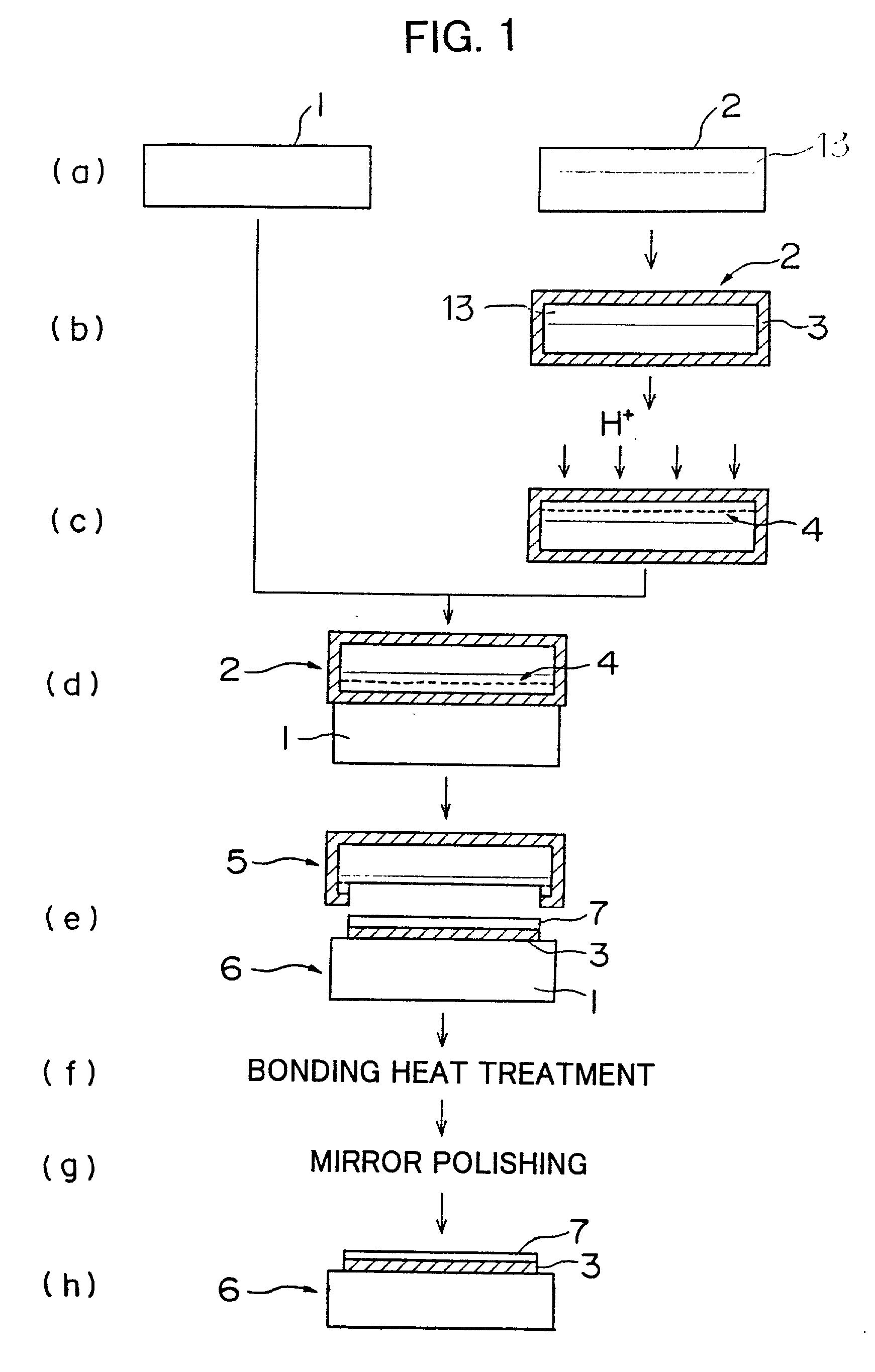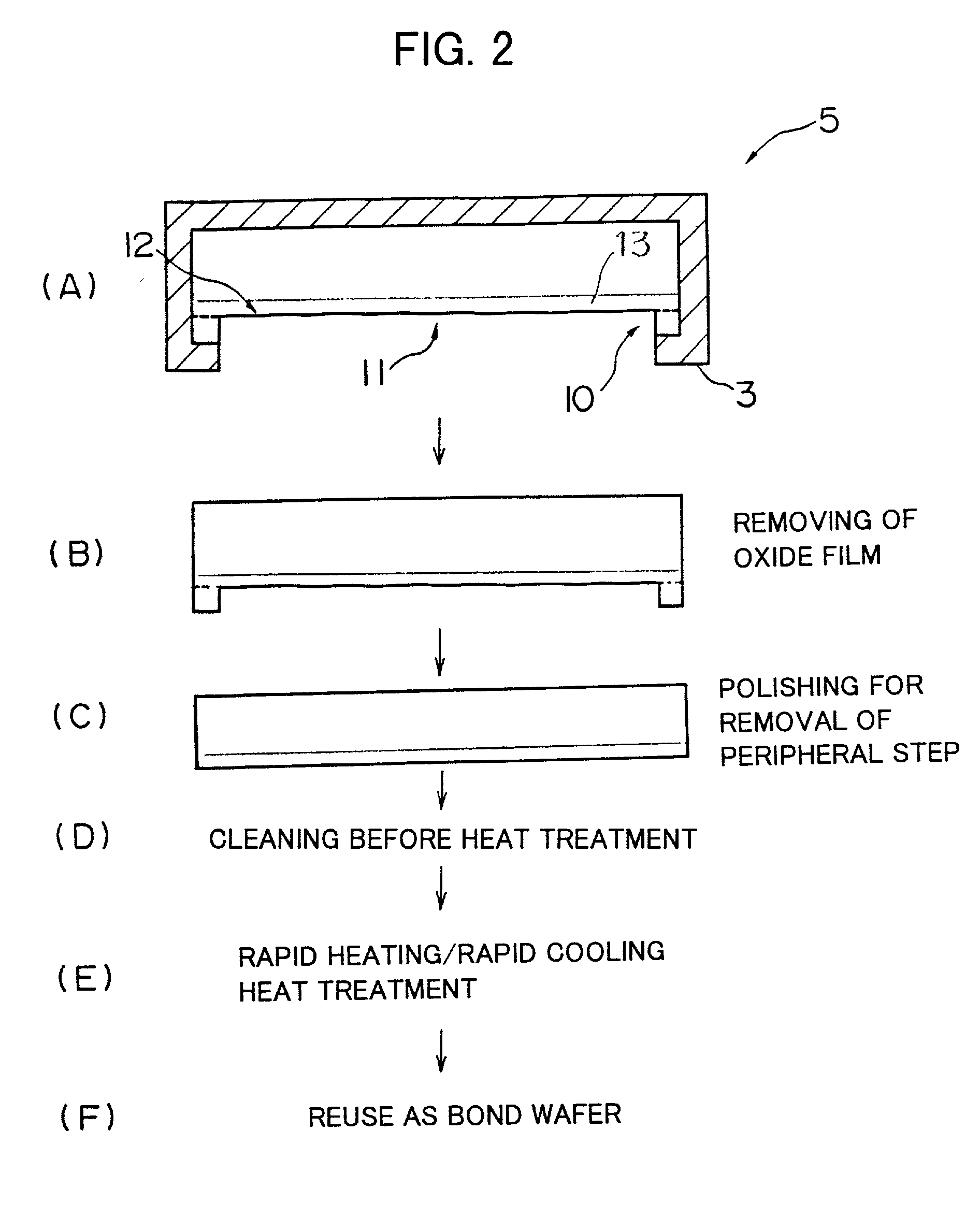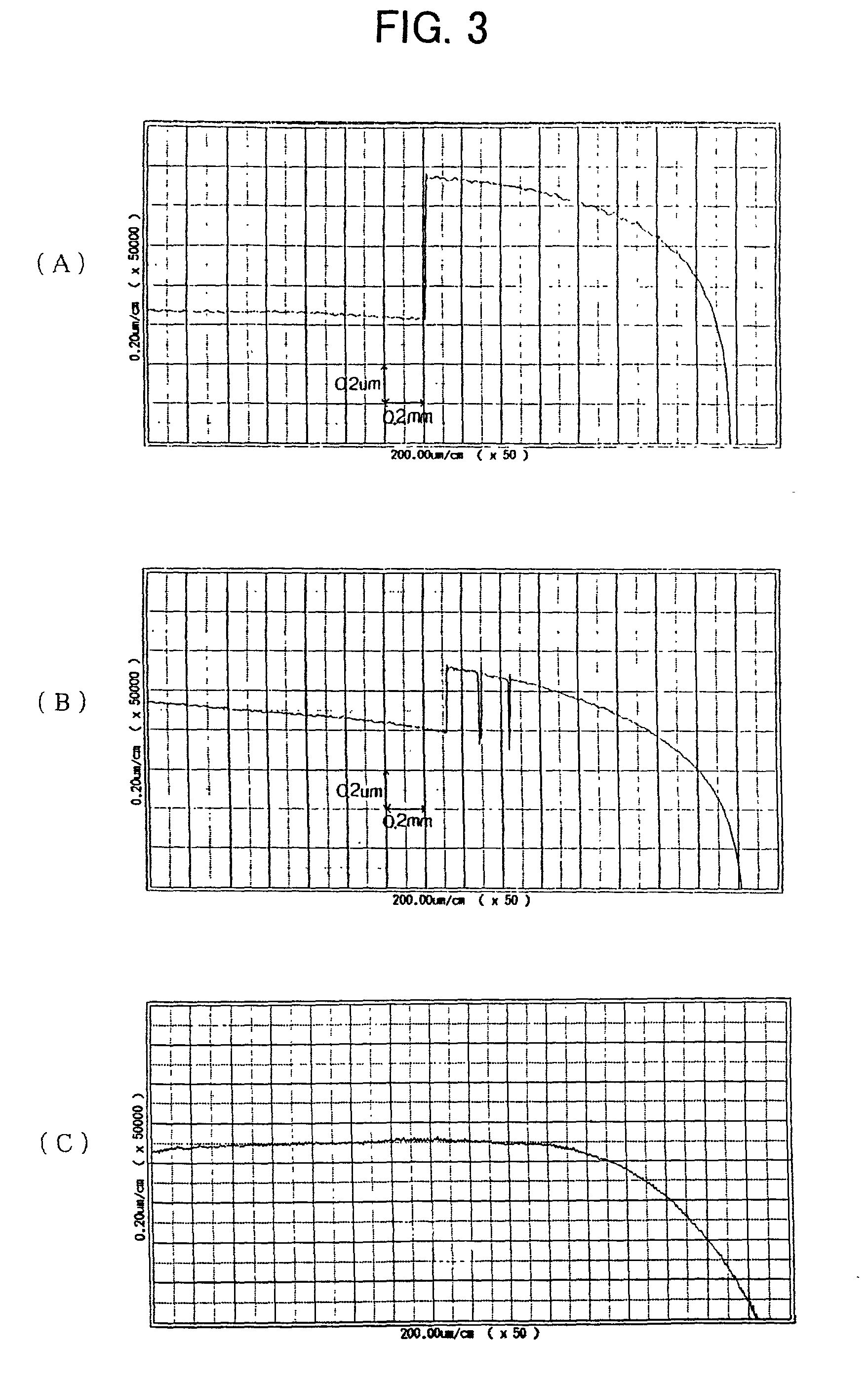Method of recycling a delaminated wafer and a silicon wafer used for the recycling
a technology of delaminated wafers and recycling methods, which is applied in the direction of solid-state device manufacturing, electric devices, solid-state devices, etc., can solve the problems of large portion of one of the wafers being pulverized and lost, and thesimox method has many
- Summary
- Abstract
- Description
- Claims
- Application Information
AI Technical Summary
Benefits of technology
Problems solved by technology
Method used
Image
Examples
example 1
[0102] Two silicon mirror wafers having resistivity of 1.0 to 2.0 .OMEGA..multidot.cm and a diameter of 150 mm wherein a conductive type is p type were prepared. As for one of these wafers, an epitaxial layer having a thickness of about 10 microns was grown. The epitaxial wafer was used as a bond wafer, and processed through steps (a) to (h) shown in FIG. 1 according to the hydrogen ion delaminating method to fabricate SOI wafers. Thickness of SOI layer was 0.2 micron. The major process conditions used in the method were as follows.
[0103] 1) Thickness of a buried oxide layer: 400 nm (0.4 micron);
[0104] 2) Conditions of hydrogen implantation: H.sup.+ ions, implantation energy of 69 kev, implantation dose of 5.5.times.10.sup.16 / cm.sup.2;
[0105] 3) Conditions of heat treatment for delamination: in a N.sub.2 gas atmosphere, at 500.degree. C. for 30 minutes.
[0106] 4) Conditions of heat treatment for bonding: in a N.sub.2 gas atmosphere, at 1100.degree. C. for 2 hours.
[0107] The high quali...
PUM
| Property | Measurement | Unit |
|---|---|---|
| melting point | aaaaa | aaaaa |
| thickness | aaaaa | aaaaa |
| thickness | aaaaa | aaaaa |
Abstract
Description
Claims
Application Information
 Login to View More
Login to View More - R&D
- Intellectual Property
- Life Sciences
- Materials
- Tech Scout
- Unparalleled Data Quality
- Higher Quality Content
- 60% Fewer Hallucinations
Browse by: Latest US Patents, China's latest patents, Technical Efficacy Thesaurus, Application Domain, Technology Topic, Popular Technical Reports.
© 2025 PatSnap. All rights reserved.Legal|Privacy policy|Modern Slavery Act Transparency Statement|Sitemap|About US| Contact US: help@patsnap.com



